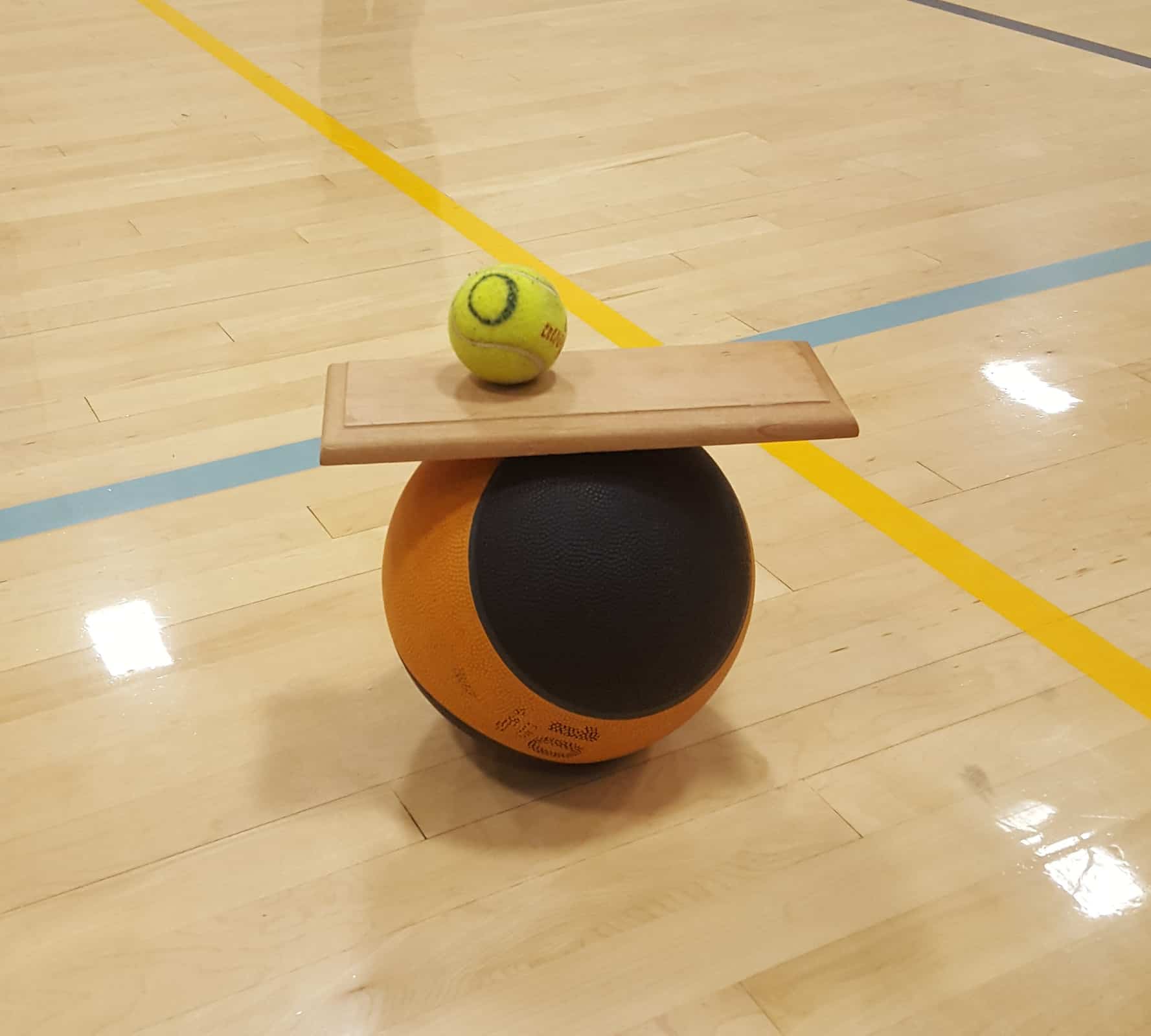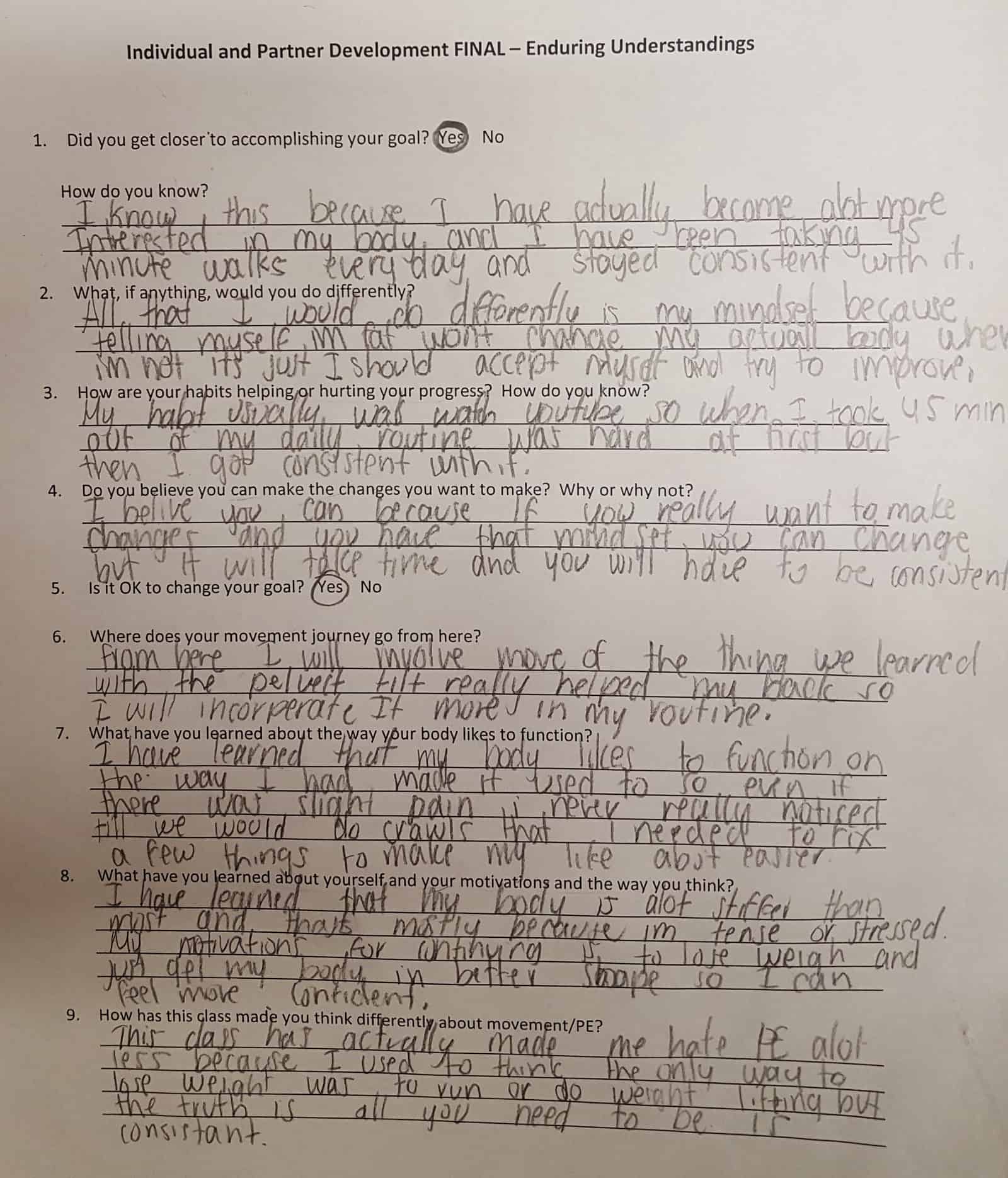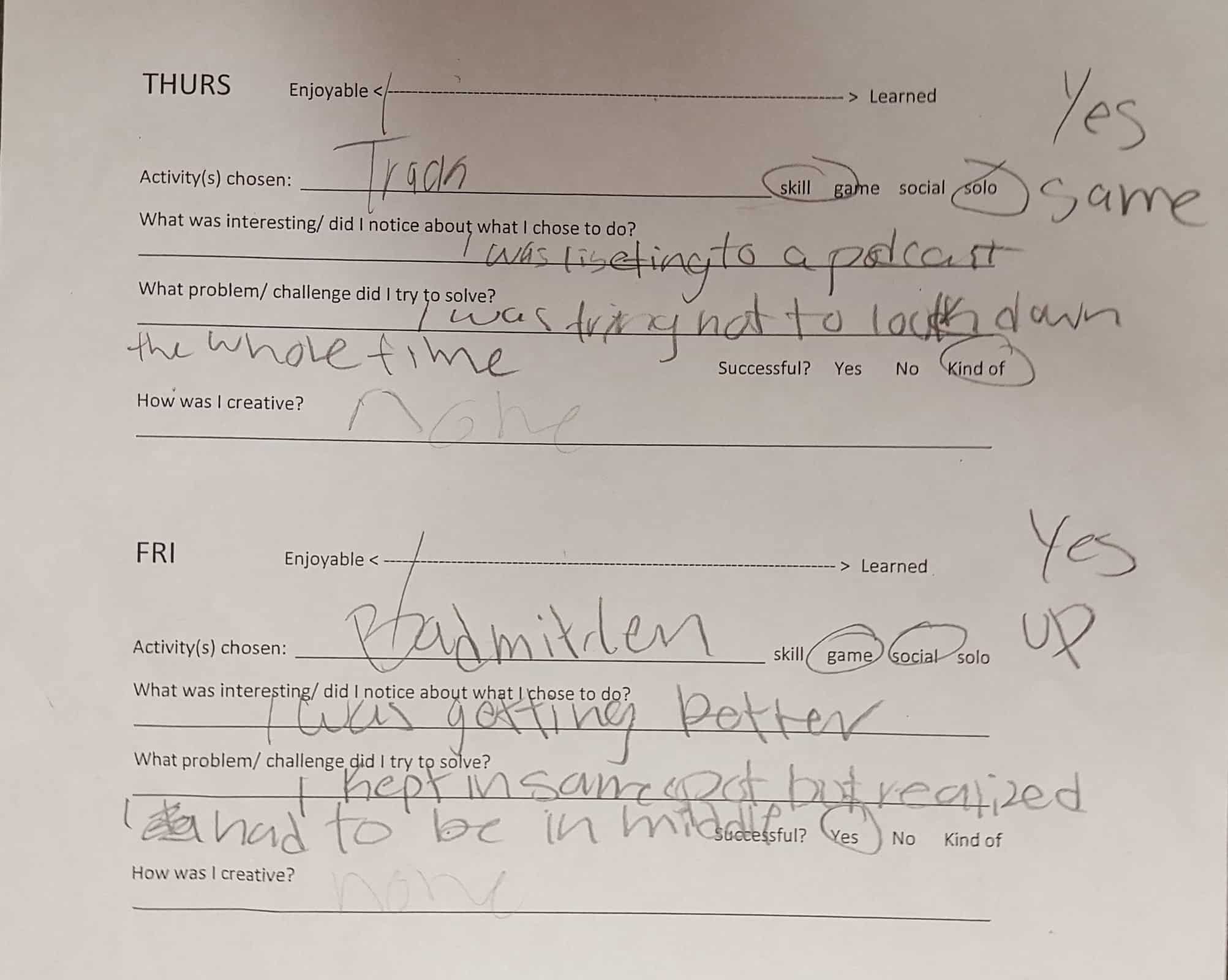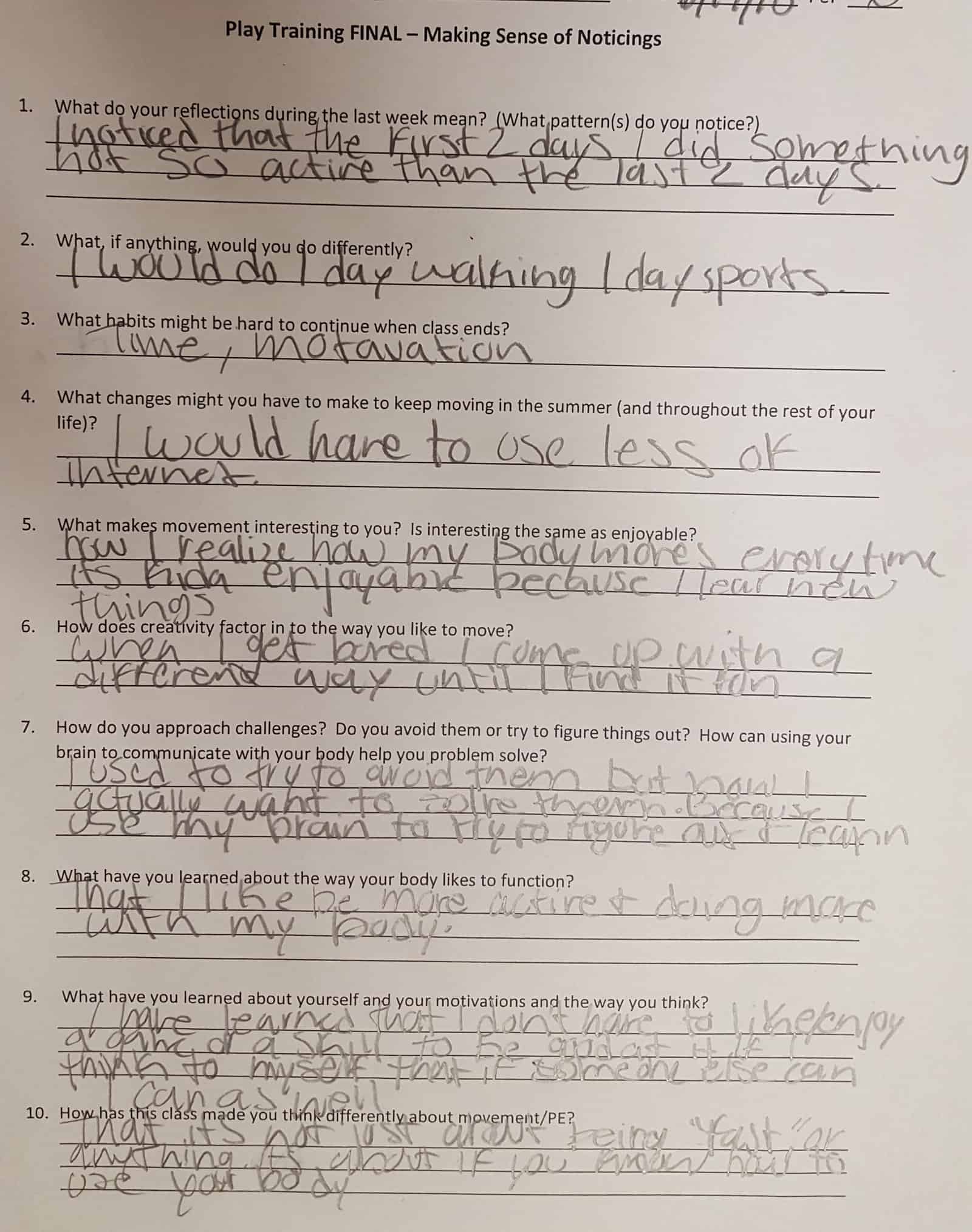
An Everything PE: Year Two in Review
Two years ago, I set to develop a “new” type of PE that looked outside the realms of sport and weight lifting. With the outliers as my muse, we set to examine movement with a larger lens — how one engages and communicates with one’s body. In attempting to give the kids ‘more’ than they had been getting, I got stuck in my own head as to what that might look like. I assumed that their choosing of my section meant they did not want to play sports nor be pushed to teeter-on-the-edge-of-puking workouts. I taught accordingly, excluding those things, as well as the kids that might be interested in them.
My quest to make a space for those who were marginalized and left out made me biased against everything (and everyone) traditional. I had become the elitist I intended to rally against.
In defense of my own, I became judgmental of others.
When faced with the hard reality of your own sanctimonious praise, my reaction was to soften, and open. I needed to re-evaluate my self-imposed rules and constructs. In a class that could be anything, why couldn’t I let it be everything?
THE PROBLEM
I was only attracting one type of student (and I liked it that way). The course kept circling around this particular fraction, and was becoming a self-fulfilling prophesy of what was good and important. I didn’t invite in other preferences and mindsets to challenge what, how, and why it was being taught. The kids who chose my section were so open minded that if I ever sensed a misstep, I typically chalked it off to an ‘off day’ where the group was abnormally tired.
To recap the situation, about 120 students were brought together at the beginning of the year, and three teachers ‘pitched’ them their class. The options were Team Sports, Weight Training, and Individual and Partner Development. Weight Training got most of the athletes (strongly encouraged by their coaches), Team Sports garnered those who enjoyed playing with/against their peers, and Individual tended to draw those who had a previously negative association with physical education the past. The latter, my section, drew 90% girls who were much more confident in their minds than their bodies. Every six weeks students were given the chance to switch to a different section. There were three chances to switch every semester.
THE TURNING POINT
Though each teacher drew in a certain crowd (and made it known that they were doing so), it became apparent that students weren’t choosing teachers or methodology, they were choosing environments and perceived levels of challenge/community. The weight lifters wanted to work hard to feel accomplished as individuals. The team sports crowd wanted to test their skills and ability in real time against live competitions, and NOT be told how to do it. They were empowering themselves by doing and finding success — the same as we were.
The depth of the entire student body became most apparent when we had ‘forced switch’ days. As it sounds, class groups stayed together and rotated into different spaces. We had one period to expose them to our style, methods, and philosophy. Everyone involved left surprised.
My day with the weight lifting group was tailored to nutrition and the details of performance. I had a student set a timer for 15min and talked with them about calories, getting thicker instead of leaner, and how ‘working out’ often made us feel as if we deserve more (and do less throughout the day). The last half of the class I showed them how to use mini-bands to increase the feel of explosiveness — the only time kids end up smiling after a running test-retest.
Team sports practiced roughhousing. Progressing from individual to partner to small group, they were allowed to do all the things that were usually called ‘foul’. Using football as a framework, they protected and pulled pinneys, then finished with a large group game called sharks and guppies, where the sharks try to ‘get’ the guppies by pulling their pinney from their waistband as they ran across the length of the gym. Anyone who got captured became a shark. The game gets more difficult as time progresses, and the swap of roles allows each student to keep working and never ‘get defeated’.
We parted ways feeling fond of one another because we understood each other better. With one positive interaction, they went from the others to the alsos. Our class did as well. I began incorporating sports and conditioning components, and started to pull in a larger assortment of students. The different mindsets and personalities changed the culture, in an energizing way. To my delight, there was a universal upshift — the newer kids raised the level of effort, and the older kids helped them think more creatively about the tasks at hand.
Young people want to get good at things much more so than they want to know their body. I just had to spell out how they were connected.
OUTCOME
Announcing what ‘sports’ we would be playing during the following cycle (always different than Team Sports, and generally ones that were only offered in Individual and allowed you to play rough) helped us appeal to different personalities and varying motivations. The game was the lure. Within their time with us, I could weave in ‘movement culture’ and challenge different motor competencies. As soon as they understood the link between the two, they became interested to participate in them.
Though fresh phases rotated in and out of the section, my core group never left. They liked the turn the class was taking and were open to challenging the newer kids with more practice and experience. The generalist approach to movement had developed a confidence and the sport specific coaching had given them strategy. They were compelled to test themselves against a higher level of competition.
EXAMPLES of TASK & CHOICE BASED LEARNING
Skills and games were transferable. Defending space and/or opponents followed constant principles. Balance is necessary to adapt to changing conditions. Without softness, you become a one-trick pony that is easy to defeat. Hitting, kicking, striking, and throwing all involved elasticity and rotation. It was all the same stuff. We wanted the same things!
Completing tasks could teach them in a moment what I tried to get them to learn all week. Awareness and body knowledge were embedded within:
Studying students during free time showed me two things: 1. If they had learned or could apply what was intended, and 2. What their natural tendencies were and/or what they were interested in. They either had the last 7ish minutes to play with tools or a concept they had been presented with, or the entire period to do what they wish. At the end of each semester, in preparation for finals, they had an entire week to use as they saw fit.
First semester we focused on goals. Throughout, we had mini-lessons on habits and tying what they like and already do to what they want. They had the opportunity to honestly reflect on choices and develop doable methods of change. Most took advantage of this holistic approach to cultivating themselves: 
Second semester we examined creativity and problem solving. We made it a point to emphasize that being creative doesn’t mean you have to make something new. The ability to alter a known to your personal interests and/or think about a known in a different way gives you ownership over it, encouraging further interaction. The problems they were most likely to face with any given task was boredom and successful completion. The freedom and faculty to devise their own adjustments was the antidote to both.
This time, the last five minutes of each day was spent spent on specific reflections..

The ‘yes and same/up’ responses refer to “Did you keep yourself moving the entire time?” and “Is your energy up, down, or the same as when you walked in?” This student held a very limited view on what creativity is.
…which they used as the basis of the first three questions of their final: 
The larger, more diverse mix of learners, the greater the potential for an all-inclusive learning environment. What is interesting to kids often falls in line to what is interesting to other kids. They way they are exposed to each other and nudged to interact has great bio-psycho-social significance. It alone is worth further investigation.
From a leadership perspective, year three will attempt to integrate the three sections even further. If we can phrase course options as pieces of a whole instead of peddling our own agenda, we will be able to provide a free-flowing exchange that suits everybody and offers everything. Egos aside, we all have something good to share. An entire generation of young people are depending on us.




Just stumbled onto your insta/website. This post is super inspiring/moving. Awesome that you care so much and have so much energy/knowledge to give.
Thanks for sharing.